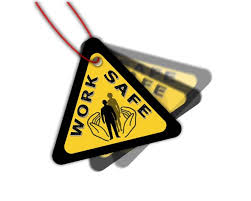 There are critical dangers in the organisation that are huge enough to strike a blow to the most critical resources of the company -- and that is when a serious work incident happens in the workplace. The real identifier of the resilience of the business is on the efficiency of the organisation's work health and safety management systems or WHSMS collaborating with proper Business Continuity Management or BCM.
There are critical dangers in the organisation that are huge enough to strike a blow to the most critical resources of the company -- and that is when a serious work incident happens in the workplace. The real identifier of the resilience of the business is on the efficiency of the organisation's work health and safety management systems or WHSMS collaborating with proper Business Continuity Management or BCM.
Business Continuity Management is a technique that is unique but complements the work health and safety management system of an organisation. It tackles on important and catastrophic risk events to the enterprise and its employees. The approach is focused in risk management for the entire organisation to make sure that when a critical incident occurs, either external or internal, that considerably impacts an organisation, the critical business functions can resume to normal operations in a timely fashion.
How do they interrelate? Both systems are data intensive and utilise lots of information, specifically in the aspects of infectious diseases and risk analysis. The management systems will need the inputs and cooperation of all levels of the organisations. Hence, an organisation must be aware of its efforts in the overlapping functions in order to do better on the information gathering process.
In unifying these two systems, a work health and safety management system can be used to support Business Continuity Management to offer consulting services on organisation on proper recovery strategies that include advising on safe minimum staff numbers and the appropriateness of facilities at possible recovery sites. The purpose of the management systems is to determine potential threats to an organisation and use the information stored in the systems in protecting the employees who may be affected by the type of work of an organisation.
The organisations must be proactive and must conduct its own due diligence. Safework Australia suggests that companies should be looking towards legislative frameworks and Australian Standards for guidance. It is therefore critical that the management systems will comply with regulatory requirements to make it possible that the organisation does not fail in its legal duties. At the very least, the following legislations must be considered by the individual in conducting a business:
(1) WHS Act 2011 -According to Worksafe Australia website, the WHS Act places the primary health and safety duty on a person conducting a business or undertaking (PCBU), who must ensure, so far as is reasonably practicable, the health and safety of workers at the workplace. Duties are also placed on officers of a PCBU, workers and other persons at a workplace.
All duties under the WHS Act are qualified by the term 'reasonably practicable'.
The WHS Act also sets out the requirements for the following:
- incident notification
- consultation with workers
- issue resolution
- inspector powers and functions
- offences and penalties.
(2) Protective Security Framework – June 2010, The Protective Security Policy Framework (PSPF) provides the appropriate controls for the Australian Government to protect its people, information and assets, at home and overseas.
(3) APRA standards CPS231, 232. - This aims to ensure that all outsourcing arrangements involving material business activities entered into by a regulated institution are subject to appropriate due diligence, approval and monitoring. All risks arising from outsourcing material business activities must be appropriately managed to ensure that the regulated institution is able to meet both its financial and service obligations to its depositors and/or policyholders.


